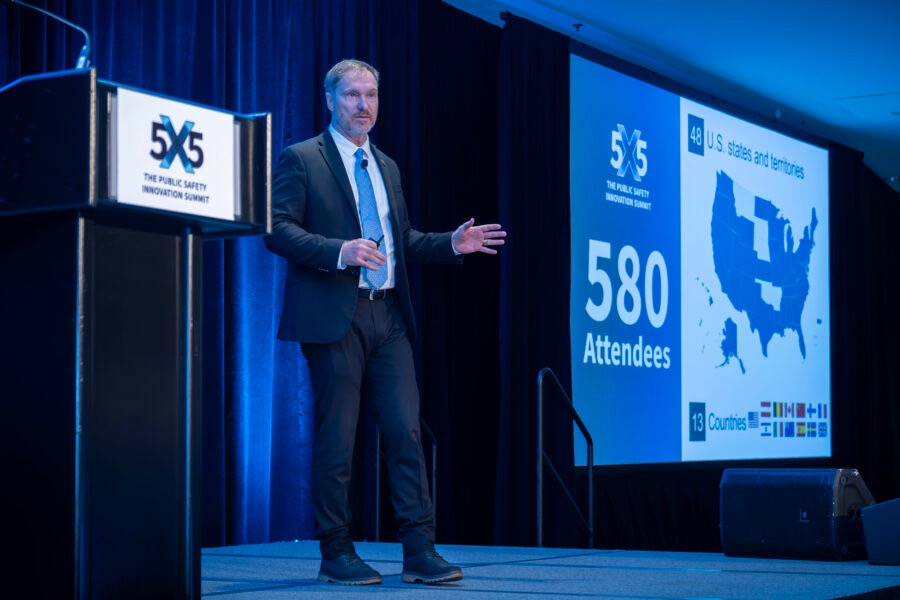
Joe Wassel, Executive Director and CEO of FirstNet, announced this week that achieving "ubiquitous coverage" for the Nationwide Public-Safety Broadband Network (NPSBN) is now the organization's primary objective. Wassel highlighted the feasibility of this goal during his keynote speech at the 5×5: The Public Safety Innovation Summit 2024, held in Chicago. This summit is a collaborative event organized by the Public Safety Communications Research (PSCR) and the FirstNet Authority.
“The dream of ubiquitous coverage is possible,” Wassel declared. “This vision, rooted in the early days of our network, is within reach. It's challenging, but we are committed to pursuing it boldly at 5×5.”
Wassel explained that achieving comprehensive coverage will extend beyond traditional terrestrial cell sites. The FirstNet Authority plans to enhance connectivity through innovative solutions such as deployable communications assets, high-powered user equipment (HPUE) on the 700 MHz Band 14 spectrum, the 5G Sidelink direct-mode standard technology, and emerging satellite-direct-to-phone functionality.
“A reliable, dependable network—that’s our daily mission,” Wassel emphasized. “Our presence at the 5×5 Summit is to explore next-level innovations, ensuring first responders remain connected, informed, and protected around the clock.”
The reliability of the FirstNet system has faced scrutiny following a significant outage on February 22, which left many subscribers without service for over two hours. While Wassel acknowledged the outage, he did not provide new details about its cause or the measures being taken to prevent future incidents. However, he expressed confidence that the NPSBN would improve, learning from such challenges.
“We know that no path to success is a straight line,” Wassel said. “We have outages, but we will emerge stronger.”
The FirstNet Authority's capability to enhance the NPSBN is bolstered by substantial financial resources. Earlier this year, the board approved changes to the contract with AT&T, unlocking over $8 billion for network evolution and expansion.
“Great ideas and capabilities need funding to succeed,” Wassel stated. “We now have the funds and the processes to utilize them effectively. We are listening to public safety personnel to shape the network's future. What will it look like in 2029? Help us get there.”
As part of a deal announced in February, AT&T will construct 1,000 new towers. Additionally, $2.2 billion will be allocated to improving coverage, particularly in tribal, territorial, and rural areas.
Wassel also highlighted the potential benefits and risks of artificial intelligence (AI) for public safety. He stressed the importance of responsible AI development and utilization, with public safety leaders at the forefront.
“AI is a powerful tool,” Wassel noted. “We are just beginning to explore its potential. It’s crucial for this community to lead the way in AI advancements, both domestically and internationally.”
Cybersecurity remains a significant concern, and Wassel assured that the FirstNet Authority is enhancing NPSBN’s security by adding personnel with expertise in this area.
“Since last July, we’ve integrated intelligence officers into our team, harnessing insights from the intelligence community to preemptively address threats,” Wassel said.
